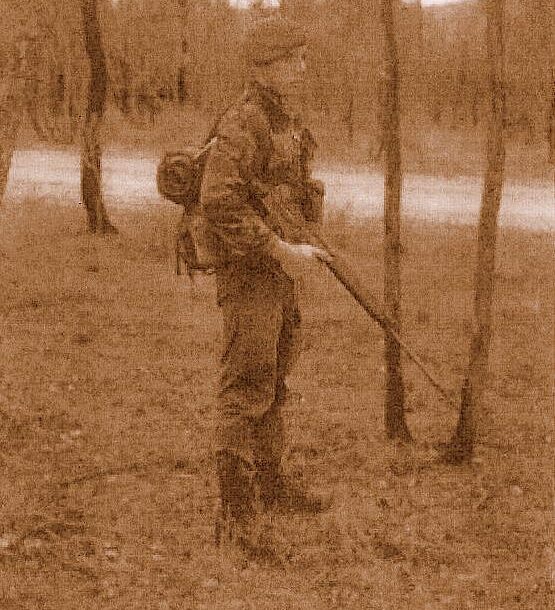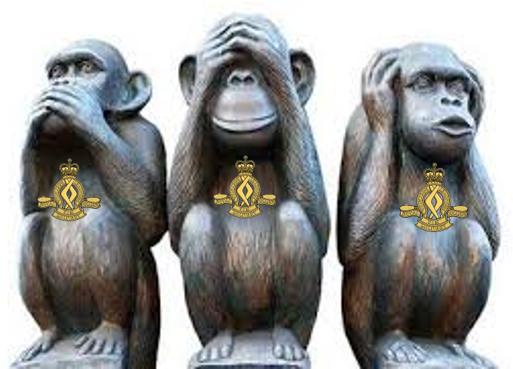
This webpage menu header ‘MEDIA SCRUTINY‘ on this website, is an account of the media reporting since 1987 Hoddle Street about Australian prisoner Mr Julian Knight; and having served our his imposed criminal sentence, since May 2014 has been condemned a ‘political prisoner’ by unelected politician Denis Napthine.
The media content is extensive across multiple news outlets, much mutually plagiarised. Most of the media commentary is not journalistic reporting , but rather biased and sensationalist, since such ‘tabloidism’ sells more newspapers and advertising. We choose not to use the term ‘tabloid journalism‘ because it is an oxymoron and only serves to discredit the qualified, trained, objective and independent Journalism profession. Biased journalists age and become cranky old columnists, shock jocks, presenters and ‘personalities’. Some even think of themselves as ‘celebrities’ – Neil Mitchell, Ray Hadley, Waleed Aly, Kyle Sandilands, David Koch and the like.
Many old Melburnians may recall this sordid rag, not journalistic, but intentionally scurrilous:
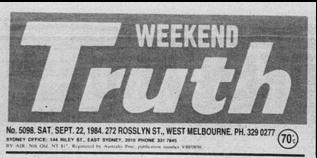
This website is not journalism, nor scurrilous. It is opinionated. It remains intentionally dynamic, so regularly updated with content. This shall remain so, so long as the Victorian Government maintains its perpetuation of treating Julian Knight as a political prisoner. It’s ad hominem legislation persecuting Knight in 2014 was corrupt conduct by former unelected Premier of Victoria the dishonourable Denis Napthine, morally blackmailed by now retired Melbourne’s Radio 3AW notorious bullying shockjock Neil Mitchell.
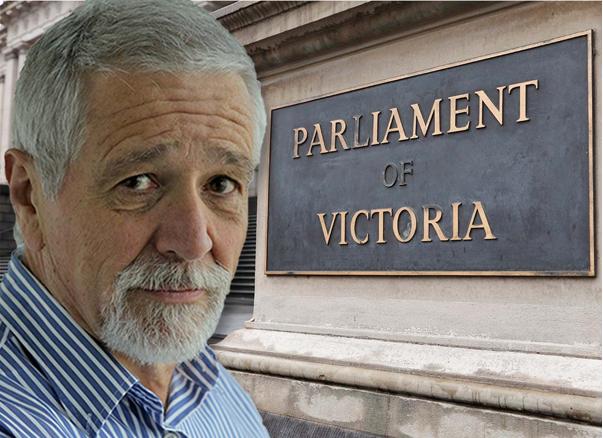
By us ‘regurgitating’ the cohort of published media outpourings on Julian Knight in this section of this website ‘Media Scrutiny’, we do so for the purpose of review and criticism.
Under the Australian Copyright Act 1968, No. 63, 1968 (Compilation No. 58) amended from 16th January 2019, Part III, Division 3, Clause 41 ‘103A Fair dealing for purpose of criticism or review’ reads:
“41 Fair dealing for purpose of criticism or review
A fair dealing with a literary, dramatic, musical or artistic work, or with an adaptation of a literary, dramatic or musical work, does not constitute an infringement of the copyright in the work if it is for the purpose of criticism or review, whether of that work or of another work, and a sufficient acknowledgement of the work is made.”
In every media outpouring that we regurgitated, we acknoeldge the original source, and even given teh reader a photo of the ‘media person’ where possible, but we don’t consider them journalists per se. So, this means herein we comply with 103A Fair dealing for purpose of criticism or review.
Further, ‘The Knighthood’ does not benefit from this including no financial gain whatsoever, since this website julianknight.com.au is a benevolent venture of citizen journalism and free speech by The Knighthood’ in support of the plight of Julian Knight as a political prisoner since 2014. The domain of this website was first on registered on 30th March 2021, the website published 1st February 2022, and the business name Julian Knight registered from 12th August 2025.
As such, having researched media scrutiny articles on line and in newspaper archives, we have come to realise that we need a better way of capturing that media record, and importantly capturing it, as is! However, due to other project commitments, this is expected to take us some months to setup and populate with the content. It is all in the public interest by the way – and we seek nor will accept and payments of any kind. We just wish and welcome others to question as they so choose, as this website seeks to provide a public service – including especially to the victims of Hoddle Street.
We emanate from Melbourne and this includes an old Army mate of Julian Knight as regular contributor to this website. We don’t embellish most of the media articles as being ‘news reporting’ nor ‘journalism’. Most instead are ‘opinions’, ‘bias’, and slurs by opinionated ‘columnists’ and newspaper editors with a contemptible yet ignorant prejudice against Mr Knight. All cowardly have failed to undertake investigative journalism into the backstory of WHY Julian Knight, an immediately sacked elite Australian Army Officer Cadet of the Royal Military College Duntroon could and would have committed such heinous unprepared random shootings of unknown civilians. A spontaneous whim Duntroon suggests – nothing to see at RMC!
In our media research, we are yet to discover even one media article that holds Duntroon in anyway culpable for Julian’s state of mind at Hoddle Street on Sunday night 9th August 1987. So, the media has a lot to answer for by kowtowing the governmental propaganda that somehow a seven month sustained torture by Duntroon Bastardisation (assault, battery and bullying, your name it) had nothing to do with Julian’s psychotic, delusional and drunken temporary state of mind on Hoddle Street just two weeks later – not a good mix for anyone!
Irresponsibly, the media just want to earn revenue from sell newspaper and radio advertising at the expense of Julian Knight. The most vitriolic and hateful being Melbourne 3AW shock jock Neil Mitchell and Melbourne TV Channel Nine’s George Donikian, both aged 72 (in 2024) and retired from media campaigning. The two should right a joint book in their retirement on Duntroon Bastardisation and investigate how it caused Hoddle Street.
This website seeks to reveal some uncomfortable and telling truths about the backstory and the post-story which the media have avoided to dutifully instead provide honest, fair, independent journalism, respecting the rights of others – pertinent to the Hoddle Street case: particularly the victims, their families and friends, the witnesses, the first responders, the perpetator.
But also to investigate how society can learn and change from this dreadful unnecessary event, so that the risk of such a rage crime happening again in some future scenario by someone else from (or still at) Duntroon is mitigated substantially so hopefully it does not happen again. Yet, Duntroon Bastardisation culture by senior cadets bully junior cadets has not change since 1911.
“The ultimate ignorance is the rejection of something you know nothing about yet refuse to investigate.”
~ Dr. Wayne Dyer
The following is supposedly the journalistic ethical standards set by the leading media industry body in Australia.
MEAA Journalist Code of Ethics
Respect for truth and the public’s right to information are fundamental principles of journalism. Journalists search, disclose, record, question, entertain, comment and remember. They inform citizens and animate democracy. They scrutinise power, but also exercise it, and should be responsible and accountable.
MEAA members engaged in journalism commit themselves to:
Honesty
Fairness
Independence
Respect for the rights of others
Journalists will educate themselves about ethics and apply the following standards:
- Report and interpret honestly, striving for accuracy, fairness and disclosure of all essential facts. Do not suppress relevant available facts, or give distorting emphasis. Do your utmost to give a fair opportunity for reply.
- Do not place unnecessary emphasis on personal characteristics, including race, ethnicity, nationality, gender, age, sexual orientation, family relationships, religious belief, or physical or intellectual disability.
- Aim to attribute information to its source. Where a source seeks anonymity, do not agree without first considering the source’s motives and any alternative attributable source. Where confidences are accepted, respect them in all circumstances.
- Do not allow personal interest, or any belief, commitment, payment, gift or benefit, to undermine your accuracy, fairness or independence.
- Disclose conflicts of interest that affect, or could be seen to affect, the accuracy, fairness or independence of your journalism. Do not improperly use a journalistic position for personal gain.
- Do not allow advertising or other commercial considerations to undermine accuracy, fairness or independence.
- Do your utmost to ensure disclosure of any direct or indirect payment made for interviews, pictures, information or stories.
- Use fair, responsible and honest means to obtain material. Identify yourself and your employer before obtaining any interview for publication or broadcast. Never exploit a person’s vulnerability or ignorance of media practice.
- Present pictures and sound which are true and accurate. Any manipulation likely to mislead should be disclosed.
- Do not plagiarise.
- Respect private grief and personal privacy. Journalists have the right to resist compulsion to intrude.
- Do your utmost to achieve fair correction of errors.
Guidance Clause: Basic values often need interpretation and sometimes come into conflict. Ethical journalism requires conscientious decision-making in context. Only substantial advancement of the public interest or risk of substantial harm to people allows any standard to be overridden.”
SOURCE: MEAA Journalist Code of Ethics, Media, Entertainment and Arts Alliance, https://www.meaa.org/meaa-media/code-of-ethics/
What a load of wholesome goodness tripe! This website is not required to, and does not seek to adhere to, such moral claptrap. Julian Knight is entitled to say what he wants.
In 2012, at the request of the Victorian Parole Board, forensic psychiatrist Prof Paul Mullen as expert witness wrote of prisoner Julian Knight:
“The combination of youth, immature rage at the world’s unfairness, suicidal despair, grandiosity, fixation on weapons, fantasies of self sacrifice are unlikely to be repeated.”
So, Mr Knight poses no risk of harm to people.
Yet this was reported by the vitriolic Herald Sun 25th October 2012 of News Corps under the following editorial heading” Julian Knight a risk of re-offending, experts warn” and lead clause: “Read the Knight dossier: THE risk of Hoddle Street murderer Julian Knight re-offending remains, experts assessing his parole find.”
Clearly, the opposite of what the expert stated.
Ethical journalism is non-existent at News Corp. This makes the MEAA a toothless tiger and its code of ethics hollow words. Self-regulation is always a joke and a cop out by government in its duty to enact appropriate legislation and then dutifully enforce it.
[In Julian Knight’s own words:]
“Media Reports
I have attached photocopies of two press reports which contain accounts of my time at Duntroon:
- ‘The Julian Knight Story: How rejection turned Knight into a murderer‘, by Keith Moor, The Herald, Friday 4 November 1988, page 1
- ‘An obsession with firearms, a short course in rejection, a sniper stalks‘, by Paul Conroy, The Age, Friday 11 November 1988, page 21.
- I have also attached a report of public comments made by forensic psychologist Tim WATSON-MUNRO at a conference in Hobart during 12-13 November 1988 (‘Bastardisation under fire’ by David McKnight, in The Sydney Morning Herald, Monday 14th November 1988, page 10) (see Attachments 9-11)
- On 14 December 1988, the ABC broadcasted its TV documentary ‘Hoddle Street‘ produced by David MORGAN and Mark RUSE, and narrated by Jonathan HOLMES. This documentary included excerpts from an interview with the Commandant of RMC, Major-General Murray BLAKE. It also included commentary on my time at Duntroon by Tim WATSON-MUNRO and Dr David SIME. As mentioned above, Major-General BLAKE conceded in his interview that I had been subjected to two acts of ‘bastardization’ whilst at RMC. Both Mr WATSON-MUNRO and Dr SIME were critical of the Army’s handling of my discharge in light of the circumstances surrounding my discharge. I have been informed that it is possible to purchase a copy of the “Hoddle Street” documentary from ABC Programme Sales.
Since my sentencing in 1988, details of my service at Duntroon have appeared in Dr Darren MOORE’s history of Duntroon (Darren C. Moore, ‘Duntroon: The Royal Military College of Australia 1911-2001’, RMC of A, Canberra, 2001, at pages 153-156), and on Wikipedia (www.en.wikipedia.org/wikilJulian Knight). I have attached extracts from both of these sources (Attachments 12 & 13). Dr MOORE’s book also contains a section on bastardization at Duntroon (pages 385-386) which accords almost exactly with the situation I found myself in at the college. The only difference from the description given by Dr MOORE is that the bastardization myself and other selected 3rd Class cadets were subjected to was inter-not intra-class [that is between the Duntroon officer cadet class levels 1,2 3, not within a single cadet class].
Of the 128 staff cadets listed as being members of the 1/87 Class at RMC [i.e the Januray 1987 intake], one was killed in a car accident on 16 August 1987 (Staff Cadet Doug BARTLE CSC No 5225), [R.I.P.] and 31 never graduated (a failure rate of 24%). A number of those cadets who resigned were serving soldiers or NCOs [non-commissioned Army officers] who returned to their [Army] units.”
[SOURCE: The above is an extract in a series of Julian KNIGHT’s records as part of his 97-page ‘Personal Account’ of his 6-month relentless persecution at RMC Duntroon submitted to the Defence Abuse Response Taskforce dated 26 November 2013, pp.91-92].
Selected Media Videos on Hoddle Street Shootings of 1987:
The following is still watchable…click the underlined link below Watch on YouTube…
Media scrutiny?
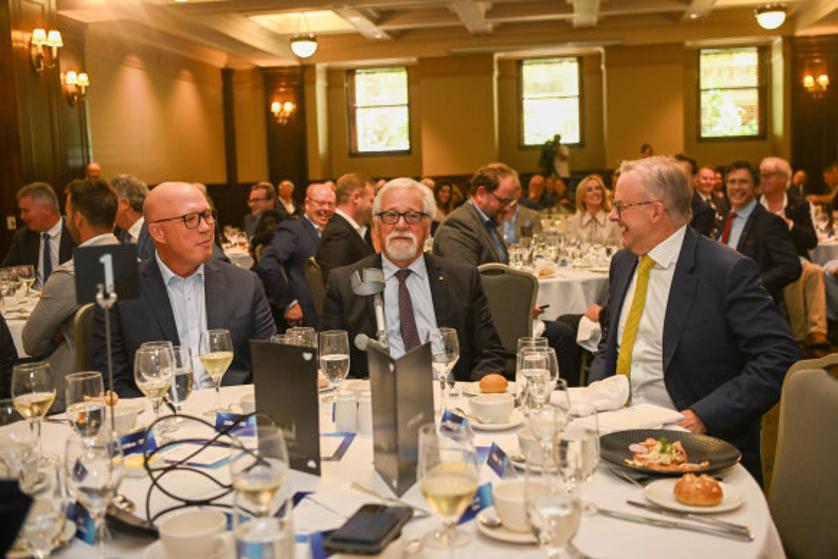
Deafening silence?
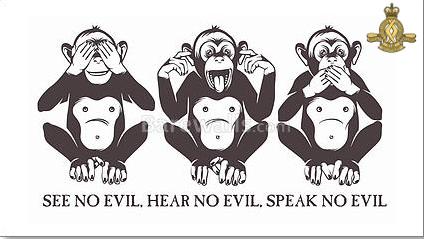
Media Subscription Paywalls?
Whilst corporate media profit from their biased tabloid opinion writing about Julian Knight, and we exclude decent fact reporting journalism in this regard, neither Julian Knight nor this website derives a cent from any of this. The media these days imposed subscription paywalls to readers for their online biased tabloid opinion writing.
Don’t pay the bastards!
So we offer this workaround to interested readers…
